The original article was written by SoftFormance https://www.softformance.com/blog/new-product-development-process/
In 2016, I decided to buy a two-room apartment in the city center. The price for it on the market dropped significantly at that time, and I saw this as a cool opportunity to start my real estate journey.
I have been investing in real estate since 2016. Like it frequently happens, my first investment experience wasn’t really successful.
If I wanted the apartment to bring me money in the long run, I had to renovate it and do it quickly.
At first, everything was going smoothly. I found a team, and we agreed on what had to be done and how much that would cost.
Then, something went wrong. Not only did we miss all possible deadlines, but the apartment did not look anything like on the render. When it was time to pay for the work, I was shocked to learn that the budget had increased by 50% somehow.
In two years, I started a new real estate project. This time, I found an experienced team that finished the project on time and within the budget.
This project was a definite success, and I wondered – what had gone wrong with the first apartment? What mistakes had I made?
I then analyzed the differences between the two projects.
It helped me realize that the success of the second project entirely depended on a clear plan of action and following each of its steps religiously.
For example, that’s what a perfect plan should look like:
Set an investment goal
Decide on the size and style of the project and list all the “must-have” features
Create a budget, preferably after talking to several licensed architects, contractors, and designers
Find the right team of contractors/architects
Set deadlines
Control the construction
Make sure to plan the cleanup
Detailed planning can help you save time and money and avoid unnecessary stress. That’s why during any product development process, you need to follow a set of steps.
The same applies to software development. For your project to succeed, you need to choose a great team of experts and develop a clear plan of action.
In this article, I will share our digital product development process that has proven to be working for hundreds of our clients throughout the years.
If you want your software idea to succeed on the market, keep on reading.
Product development process: 7 key stages
The product development process is a multi-stage step-by-step process of bringing your software idea to life.
At SoftFormance, our product development process consists of 7 stages, mainly:
Idea generation
Product strategy
Project roadmap
Design
MSP (MVP) build
MSP (MVP) launch
Post-launch software logistics
Let’s dive deeper into each step, then!
Idea generation
The first step of the product development process is always idea generation. It’s the basis of any product development.
No matter how you’re going to develop your project, in-house or with the help of outsourced teams, you need to have a clear vision of the future project.
First of all, define the problem you aim at solving. To do this easier, answer the following three questions:
What is the problem?
Who has this problem?
Why is this a problem?
During this stage, always remember that you need to generate validated ideas. How do you do this?
You don’t want to solve two or more problems at the same time. First, become an expert in a new domain or within a new audience.
Then, pick your existing audience. You can create products for students, beauty industry professionals, digital marketers, and so on. The list is endless.
After you have picked your audience, find a problem they have that can be solved with your software.
There are two approaches to identifying problems: PIDD and Software Safari.
PIDD (Problem Identifying Deep Dive) Method
The first step would be to pick your audience. Those can be your followers, existing clients, peers, employees, vendors, or partners. You name it.
Next, schedule 10-30 interviews with people from the audience of your choice.
Ask them these PIDD questions:
Over the last year, what has been the most persistent problem in your (life/business)?
How do you currently handle or address that problem?
What are the consequences if you don’t solve that problem?
If you had all the resources in the world, time, money, manpower, how would you solve that problem?
If that solution or a more efficient one already existed would it be worth paying for? If so, how much?
From the answers you receive, you’ll be able to extract some useful insights and find out more about common problems, people’s complaints, and how they can be solved with software.
Con you trust this method fully? Unfortunately, no. People don’t always tell the full truth, so don’t expect to get incredibly accurate results. Moreover, you can try the second approach: Software Safari.
Software Safari
When you use PIDD, you ask people directly and don’t always get truthful responses. With Software Safari, you spy on what others complain about.
First of all, find the watering holes. Go to social media groups on Facebook, online public forums, and business community websites. You can also check competitors’ software support channels, online events and meetups, and even Reddit.
After you decide where to look, think about what to look for. Compile a list of possible questions and complaints and go from there.
What are the most common problems and complaints users have? Are there many similar comments about a specific issue? You can spend anything between 2 hours a day to complete days online learning about your audience and their complaints.
When you collect your insights, it will help you narrow down your customer segment, define the product strategy, and scope out the project.
Remember, you can always combine PIDD and Software Safari. In fact, it would be a great idea. This way, you’ll be miles ahead of all other software entrepreneurs.
Product Strategy
The second step of the new product development process is creating a software product strategy. It’s about definite you want to achieve and how you want to get there.
When you decide to invest in real estate, you first need to figure out a couple of things.
What is your goal? Do you want to live in the house by yourself, resell it, or rent it for the long term? Maybe you want to rent it for the short term on Airbnb?
Let’s say you decide to rent it long-term. Them, new questions arise, such as:
How will you find your tenants?
How will you ensure that your tenants stick for longer and are happy with the apartment?
What will be your ROI out of this?
These questions are also applicable to building a new software product, and that’s why you need an effective software product strategy.
Product strategy helps answer the five most critical questions:
How do we acquire Users? (User Acquisition)
How do we onboard new Users? (User Activation)
How do we keep Users for the long term? (User Retention)
How do we make existing Users refer to new Users? (User Referral)
How do we make money with our software? (Revenue Model)
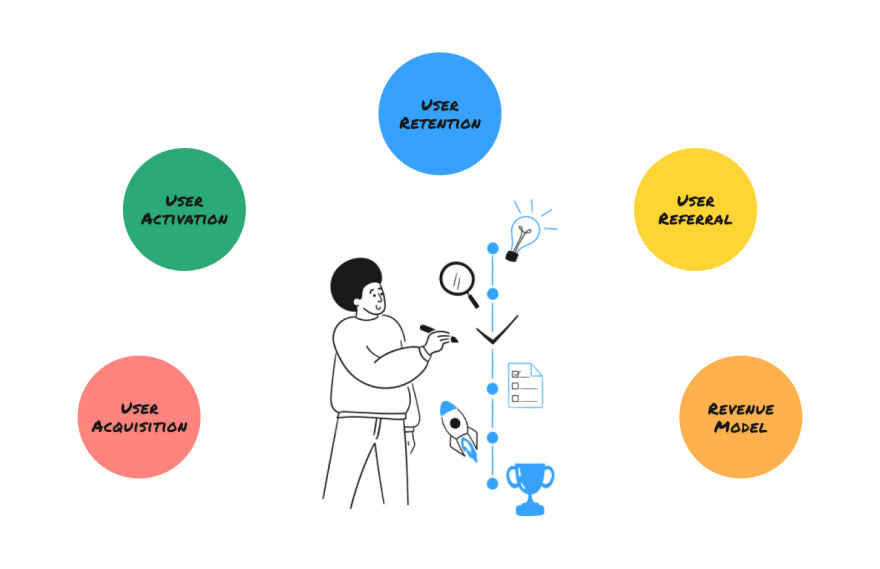
Out of these five pillars, the highlighted ones are essential. You can’t move to the development process before you answer these questions.
Why?
The scope, interface, and many other aspects of your product are directly influenced by your software product strategy. That’s why it is so important to answer these questions before moving to the technical part of the development process.
Now, let’s talk about each pillar of product strategy in detail.
User Acquisition
When you’re creating your product strategy, you need to understand how you will gain new users for your app, platform, or service. Without a user acquisition strategy, it would be super tough to find and convert new users.
Fortunately, we know three secrets for proper user acquisition that will help you become a master in it.
Secret #1: Build Software for Your Existing Audience
Sell to those you know, love, and understand. There’s no need to find new audiences. You can sell to your peer, followers, partners, or existing clients.
Secret #2: Dream 100
Ask 100 influencers with your target audience to promote your product. Well, actually, even 20-25 might be enough for a start.
The goal is to choose influencers whom people trust. Build relationships with the influencers; never rush it.
Remember: quality over quantity.
Secret #3: Software as a Backend
When you’re developing a new product, remember that your users might need some assistance and education before solving their problems with your software. You can’t just give them the product and expect them to know how to operate it. People need instructions and assistance.
For example, with my partner Ethan, we built Opesta – a Facebook marketing automation software.
People had to learn how to connect their Facebook Accounts to the app and how to do proper marketing messages automation to get LEADS and results.
As you can see here, at first, we sold a frontend product to our clients. They had to learn how to do things manually and only then were we able to sell our software.
Why is this important?
People should be educated and prepared for your software, and selling small educational products is cheaper and helps acquire more new users.
User Activation
The next core pillar of product strategy is user activation or user onboarding.
Did you know that 40-60% of users don’t open the app after the first signup? I’m sure you have also been among those users. How many times did you install an app and then never open it again?
There can be many reasons why users choose not to use the app: too complicated signup process, awful design, lagging interface, etc. Whatever the reason, it means that as a user, you’ll never see what’s inside that software.
When developing a new product, you want people to use your software, right? That’s why user onboarding is so important.
This process should be simple, short, but highly effective. This way, you’ll improve conversion from just a new sign-up to a loyal user.
Any software activation strategy consists of 3 things:
Activation Goal. This is a small value that your new user gets out of your software at the very beginning. Without it, the user will not stick with you for long.
Activation Path. This is a detailed step-by-step process from registration to achieving the small activation goal. It can include a registration form, email verification process, some questionnaire, payment, onboarding checklist, data setup, and account settings configuration.
Activation Time. This is how long it will take your user to achieve the activation goal. The smaller the activation time, the better.
At the very minimum, your onboarding path should consist of:
Simple regiatration form
Company details form
Team members setup
A login form
Dashboard default page. This is needed for new signups to welcome them.
Remember to never skip this product strategy because you not only need to find new users. You need them to stay.
User Retention
User retention is about how long your users stay with you: one day, one week, or ten years.
Your task here is to make them stay as long as possible.
Many entrepreneurs make one serious mistake when developing new products: they are obsessed with user acquisition. However, revenue and profits are concentrated within the existing customer base.
Don’t chase new clients who will stay with you for a short time. Focus 90% of your efforts on making your existing users happy.
Again, let me share three key secrets to great user retention.
Secret #1: Must-have vs. Nice-to-have
Let’s say you have an idea of building a wedding planner app or a habit tracker. Sure, that could be useful for some people, but ask yourself – will people use this app daily or weekly? That’s unlikely.
Avoid one-time and hobby software ideas and focus on something the users will use frequently. For example, communication tools, project management apps, or bookkeeping SaaS.
Secret #2: Customer Service
All of us had to contact customer service at some point in our lives, right?
How often was your experience pleasant?
If you had a bad experience with some business services, but their customer service was excellent, did you continue using the app? Probably, the answer is yes.
If a company is able to handle your complaint quickly, admit their failure, and even offer you a small bonus, it immediately improves your experience, and you will more likely continue using their services.
No matter how flawless your software is, mistakes can still happen, and you need excellent customer service to offer support to your clients.
Thus, organize proper support channels on day one, and your user retention rates will increase.
Secret #3: Community
Any human being is a social creature, and we enjoy life with an aim. We need to have a sense of belonging to a community.
Always keep in mind these characteristics when growing your software business.
You create software for people; thus, you should always create communities with a shared goal.
If you’re building software for project managers, make it a goal for the users to deliver the projects on time and within budget.
This way, users will have a shared goal, and they will feel that they belong to a community.
You can start by creating Facebook groups for your product, where people will be able to communicate and share their experiences.
These small groups will allow you to collect feedback, answer your users’ questions, and increase customer loyalty.
User Referral
When you need more storage on Dropbox, you can use their “refer a friend” function and receive 500Mb of free storage per user.
I shared a Dropbox link with all my Google contacts and grew my free gigabytes to 16.
It’s just one of the many examples of how companies use user referrals to gain new clients and keep the ones they already have by offering them free services.
It works not only for the customer market but for businesses, too.
A combination of a proper user retention strategy with effective user referral can help your business grow without further financial investments.
To achieve this, you would need:
Great interface design
Proper incentive
Exceptional customer service
If your product has an excellent design, offers the user a good experience, provides friendly and helpful customer service, and makes a direct ask, you’re golden.
Revenue model
This is the last core pillar of any software product strategy. It consists of things like pricing tiers, revenue structure, free trial vs. freemium questions, and many more.
But there’s one secret I want to share with you. If you know this rule, everything else doesn’t really matter.
LTV:CAC > 3:1
What is this?
CAC is the price you pay to get one new customer.
LTV is the lifetime value. It’s how much you earn from 1 customer over its lifetime.
For example, you charge 50$/month on monthly subscriptions, and your users stick with you for 18 months. So, the LTV will be 900$.
If the CAC is 300$/user, what will your LTV: CAC be?
Right, 900/300 = 3:1
What it means is that for every 1$ you put into ads/marketing, it yields another 3$. If you have a ratio of 3:1 or higher – you’re winning. If it’s any less – you will either stagnate or grow too slowly.
How to ensure that the ratio is 3:1 or higher? Follow the three previous rules:
1 – Upsell to your existing audience
2 – Retain users for the long-term
3 – Leverage referrals
Yes, that’s the big secret. By following these rules, you will have a ratio of 10:1 or even higher in your software business.
Project Roadmap
Now, let’s learn about the next step of the new product development process – the project roadmap.
To launch your software product on time, within budget, and of proper quality and scope, you need a project roadmap.
What are the prerequisites for a good project roadmap?
A good validated idea
Product strategy
A trusted development team
Team roles: programmer, business analyst, UX/UI specialist, and project manager
The process of project road-mapping consists of three steps: Technical Oversight, Specification, and Estimates. Let’s talk about them.
Step 1. Technical Oversight
During this step, your team of developers needs to look at the list of technically challenging features and determine whether the task is technically doable and how much effort it’ll take.
Why is this step important?
It helps mitigate technical risks, prove that the software idea is technically feasible, deliver more accurate estimates, and avoid too complex ideas.
You don’t want to work on an idea so complex that it will take you 2-3 years to launch your software product, okay?
That’s why the developers will take your list of challenging features and put together quick technical experiments called Code Spikes.
After that, you’ll receive a summary of each challenging item, and you’ll see whether it is wise to continue with the development process.
Our devs spend around 1-2 days on this task for smaller projects. For bigger, from 3 days to a couple of weeks if needed.
For example, three years development project usually requires 2-4 weeks for programmers to do technical oversight. But 6-12 weeks project needs just 1-2 days for the same procedure.
Step 2. Specifications
Specifications are a list of features and a more detailed scope, explaining to the developer what they need to build and how it should work – kind of detailed instruction.
Why does a dev team need these specifications?
First, to make a more accurate estimate in the next step of the project roadmap.
Second, to build exactly what you need. You’ll use it with your dev team as tasks during the development process.
Specifications allow the dev team to build your app with the least possible effort and with the biggest possible value for your first users.
Usually, a specification document consists of 20-100 pages, where we collect anywhere from 40 to 200 User stories (they consist of user roles, actions, and a goal)
Who is responsible for this step? Usually, a project manager and a business analyst. They prepare specifications with some assistance from programmers, and this process takes 2-3 days for smaller projects and up to 1-2 weeks for bigger ones.
Step 3. Estimates
When I talk about estimates, I mean estimates for three things:
Amount of efforts
Deadline estimates
Budget estimates
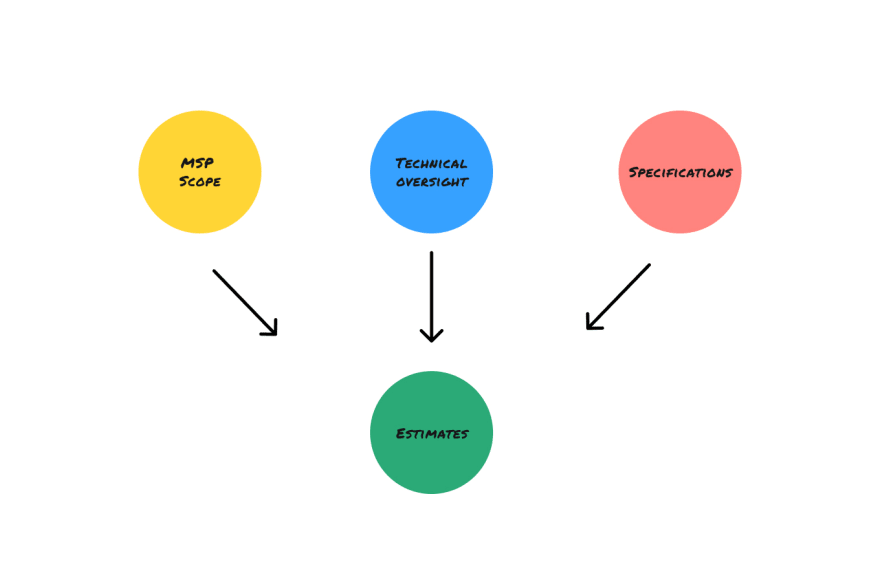
For this step, we need three things: to define the MSP scope, a technical oversight document, and a specifications document.
Why do we need this step?
First of all, plan the product release date.
Second of all, a dev team wants to know how to break the project down into smaller parts to show you a demo a couple of times in the middle of the development process.
And, finally, for you to have control over the budget.
During this step, you would need to estimate the timeline, budget, and milestones. If your project is small, spend with your dev team up to 10% of the entire project time/budget on Estimation and Planning.
For some significant projects (longer than 6 months), spend 5% of the time/budget on this step.
Design
The next step in the process of new product development is UI/UX design. In short, product design is how your software looks and works from the user’s perspective.
At a minimum, this process involves the following roles:
User Experience (UX) specialist
Graphic Designer
And Business Analyst
Product design is also a multi-step process, and if you want to learn more about it, we have prepared a detailed guide for you.
MSP (MVP) Build
Imagine: you’ve been building a house for some time now, and you decide to move in with your family. However, you have only finished two bedrooms, a living room, and one bathroom. While you’re living there, the team is finishing the other rooms.
If we’re talking about software, this approach is called a Minimum Sellable Product (MSP) version.
It means that for the first release, you don’t build full-featured software. Instead, you create a smaller, simpler version of it that can be sold. After the first release, you add more and more features.
There’s no need to spend all your money before the initial release. Why not focus on the core elements and build something small but still usable?
That’s why this step is called “MSP Build.”
It consists of the following stages:
Hiring Development Team.
If you want to launch a new product successfully, you need a team of talented developers. If you want to learn how to choose a team, read this article.
It is also important to know which budgeting structure to choose: Time & Material or Fixed Price. If you need help choosing, this article is for you.
Project Kickoff.
During this step, you need to decide where to start. What tools and environment do you need with your team to stay on top of everything? Assign all responsibilities, evaluate your tech abilities, and make sure that you are able to work on the project with your existing budget and tech expertise.
Development Process.
This step involves sprints, demo sessions, meetings, status updates, and overall team communication. Dedicate time for regular meetings with the tech team and decide how much control you want to have over the development process.
Change Requests & Scope.
Sometimes, product development requires making small changes in the scope, so you should be ready for it. Assess possible risks and changes so that you are ready when they appear.
MSP (MVP) Launch
After you’ve built your first MSP, it’s time to launch it.
It doesn’t mean you should push it to the production server and make it publically available right away.
No, it’s about getting your first 10-50 free or paid users on board.
So, what are the steps of the MSP launch?
MSP Launch Tech Checklist. It’s about preparing and launching a production server.
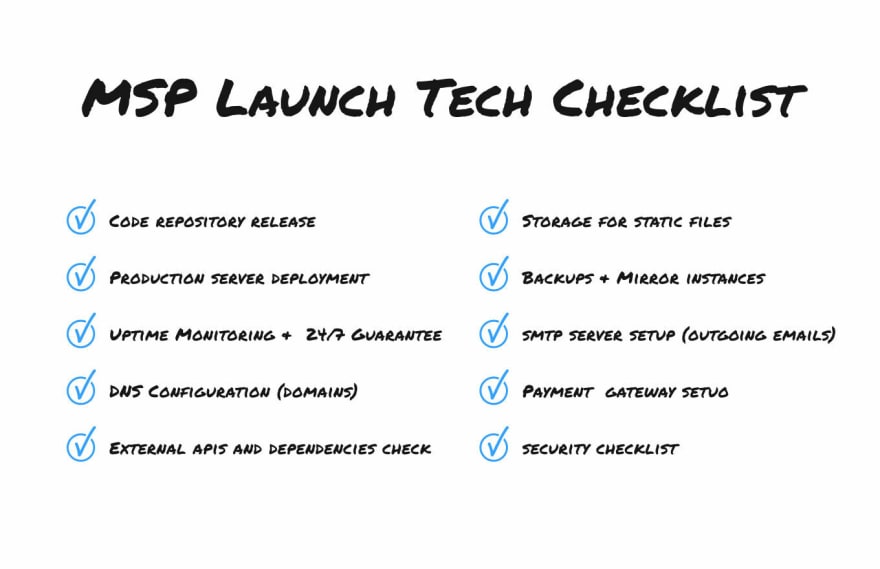
MSP Launch Marketing Checklist. This is about the tactics to get your first bets users. Create your own pre-launch list and figure out the best channels to get your first users.
The first users. Sign up your first 10-50 users and collect early feedback and numbers
Post-Launch Software Logistics
Your software journey is not finished here. It’s only the beginning.
The majority of new software products spend months or even years finding their Product-Market fit. That’s why it’s so important to understand what venture you’re stepping into and how to overcome the possible obstacles.
After the launch, you need to find a balance between bug fixes and adding new features to your product. It’s about that middle ground that makes everyone happy: both the new and existing users.
What should you focus on during this stage?
Support & Maintenance. This includes customer support and bug fixes by the development team. You can also add new features, but try to find a balance.
Growth. Find your Product-Market fit. Then, start growing the user base and lower the number of people leaving your software monthly.
If you take the product development process seriously and follow all of its steps, you shouldn’t face any serious challenges. Still, it’s better to be safe than sorry, so let’s look at possible problems that may arise during the development process.
Possible product development process challenges
If you don’t have a lot of experience with product development, some mistakes may happen. Don’t worry, it’s totally normal. When you start learning a new language, you don’t become fluent overnight, right?
The same is true with the product development process. Some of these challenges may help you grow and learn. Still, it’s better to know how to avoid them and solve them if they do arise.
Unclear requirements
If you don’t clarify your requirements to the development team from the very beginning, it can result in missed deadlines, lost budget, and a total failure of the project. Thus, make sure that you have a clear list of requirements and that you communicate them to your dev team.
Different expectations
Sometimes, when starting a new project, a client and a development team can have different points of view and expectations. If you want to avoid future issues, make sure that you understand and envision the future project in the same way.
Always clearly communicate with the team and discuss all details of the future product. Moreover, make sure that you agree on the budgeting structure beforehand. You can learn more here.
Unnecessary features
A lot of new projects suffer from unnecessary functionality and too many added features. Most of the time, it is just a waste of time and money, and what a project really needs is a working MVP. Focus on the core features first, and you’ll have more time to evaluate the idea and add the missing features later.
Example of new product development
One of the recent projects we worked on was LocalPower for Ryan Wallace.
Idea generation
Our client wanted to create a new CRM system for texassolar.pro agency from Texas. This company was installing solar panels on the roofs, and the goal was to create a CRM for Ryan and other agencies to sell their products.
This system allows creating roof design tool proposals on the roofs through Google Maps and Nearmap.
You can choose a house and draw a perimeter so that the system automatically places the panels on the roofs in the most efficient way.
It also allows calculating all expenses and power generation of the solar system on the chosen roof.
Project Strategy
The first step was to work on market positioning and product strategy.
We did a detailed 20+ research for the client, analyzing each step of the process, as you can see on the screenshots.
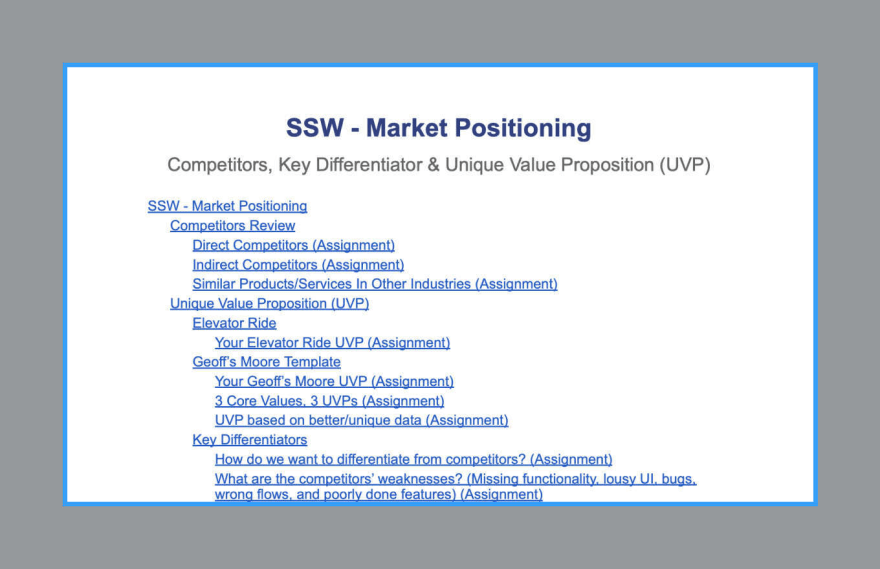
Then we put together 5 key areas of Software Product Strategy:
Acquisition
Onboarding
Retention
Referral
And Revenue Model
Project Roadmap
Next, we created a project roadmap – a detailed technical software blueprint.
It included Full Scope Notes, Platform Decisions, Non-Functional Requirements, and MSP (Minimum Sellable Product* version) Scope.
During this step, we also worked on specifications. We created an 80+ pages document with Epics & User Stories and created detailed tasks for developers.
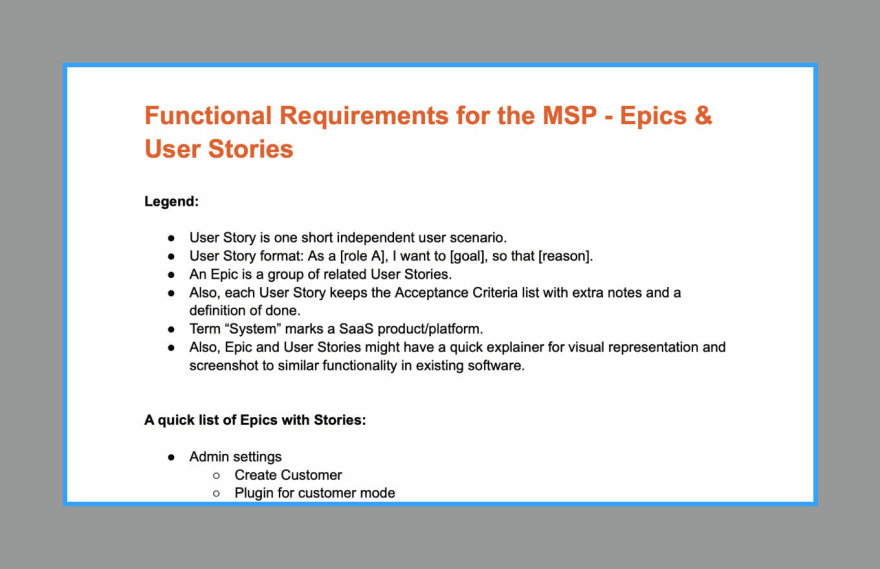
Design
The next step was to work on the design of the project.
Here is the design of Solar Power, created by our UI and UX designers:
MVP Development and Launch
Next, we moved on to building an MVP and launching it.
We did it within 5 months and here is what it looked like:
Post-launch Sofware Logistics
After the launch, we have offered our client constant support and maintenance of the product. It included bug fixes, adding new features to the product, and providing tech support.
Also, we added new features and eventually turned it into SaaS multitenant platform.
Our goal was to ensure that the current customers stayed and that the new features attracted new users.
Wrapping up
As you can see, in SoftFormance, our process consists of 7 steps, each playing an important role in the success of the future product.
If you follow these steps, I guarantee that in 6 to 12 weeks, you will launch your first software product, tool, or app. Isn’t that exciting?
With more and more businesses moving online, the need for an effective product development process has increased a lot. Even if you have a small company, to stay competitive in the market, you need to start investing your time and money in development now.
This process is not as difficult as it may seem. You don’t need to be an expert in programming, have years of technical expertise, or spend all your money on development.
What you need is a tech team you can trust. A team with a detailed product development process that has shown to be effective and deliver successful products.
So, it’s just a question of your determination and a choice of a team.
In recent years, we have worked on 200+ projects from A to Z. For each of them; the process was the same. It consisted of the same seven steps you have just read about.
What differed was the clients’ ideas and expectations.
If you have an idea and want to make it a reality but don’t have a team of developers, contact us. With our development process, you’ll receive your finished product in 6 to 12 weeks.



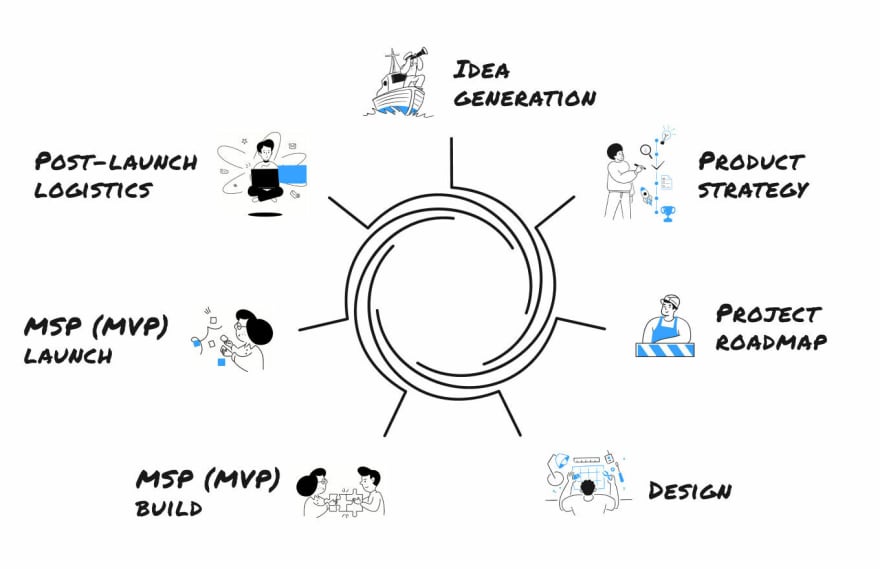



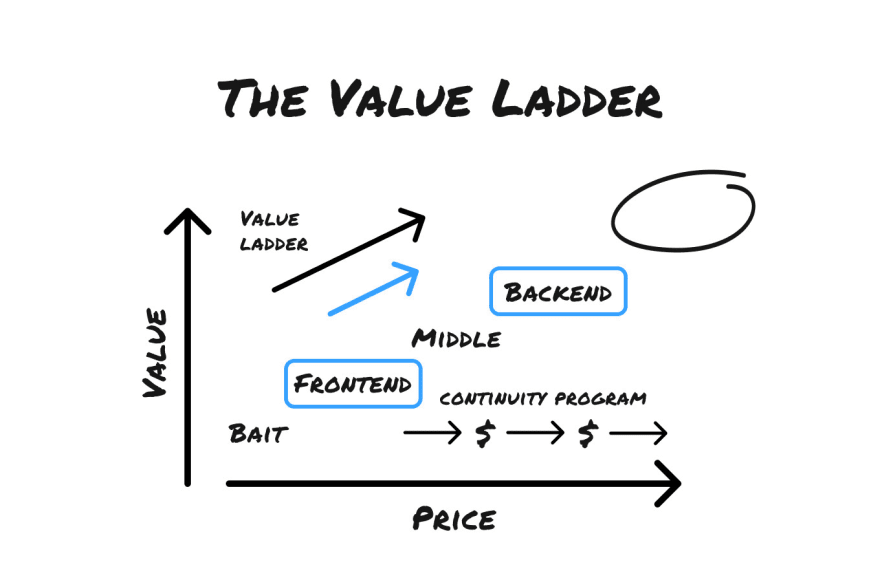

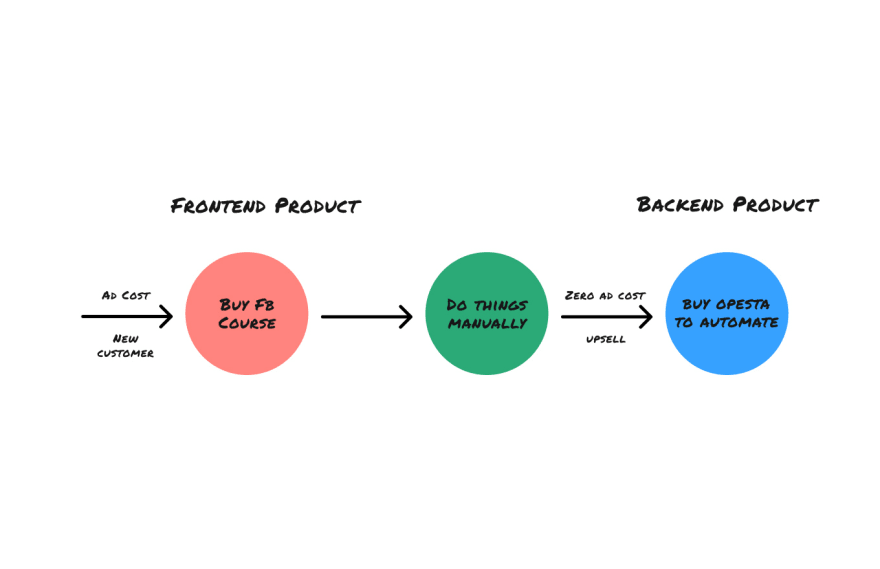
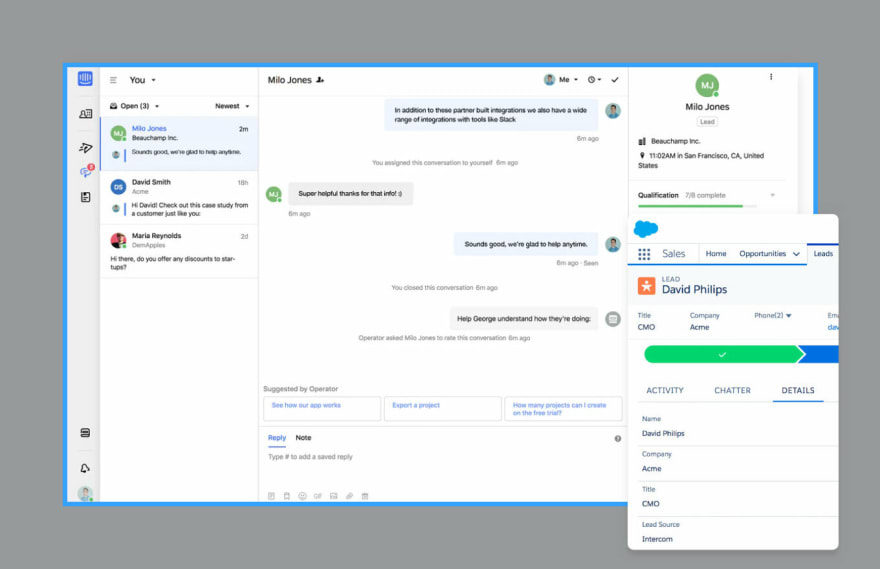
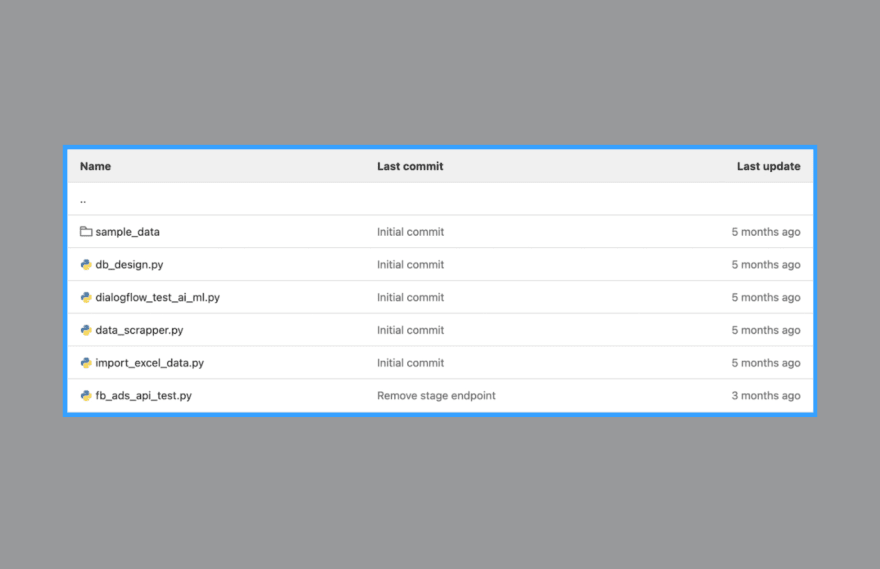




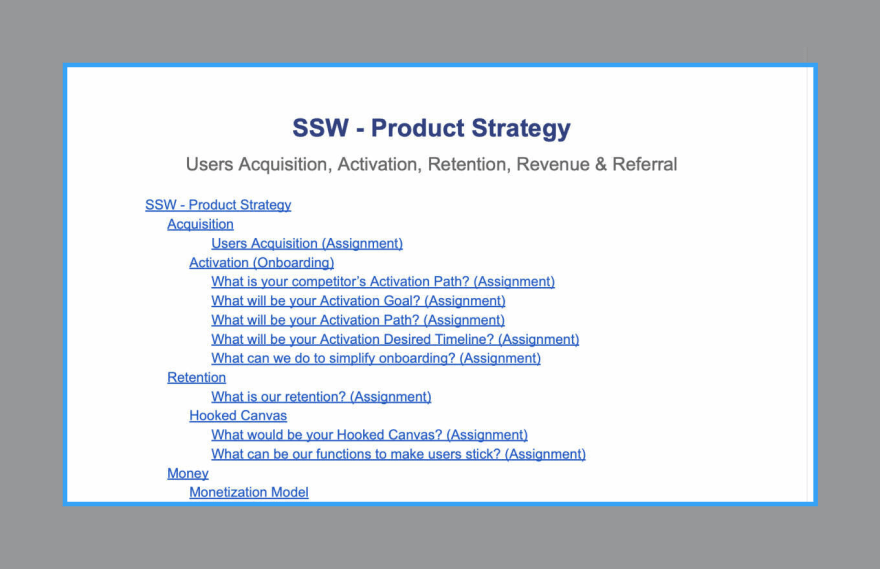


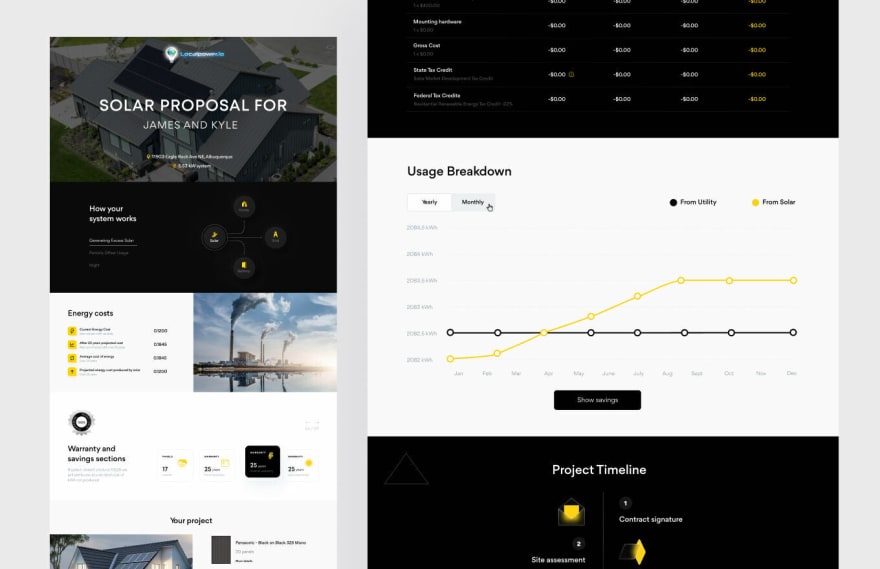


Top comments (0)